Welcome to a new issue of the Journal of Runic Studies, the premier Malkioni publication for studies into the nature of Glorantha. If you haven’t subscribed yet, please consult with the spirit bound to the appropriate electronic page.
Chaosium News

Here are this week’s Chaosium news!
The Stafford House Campaign is Out
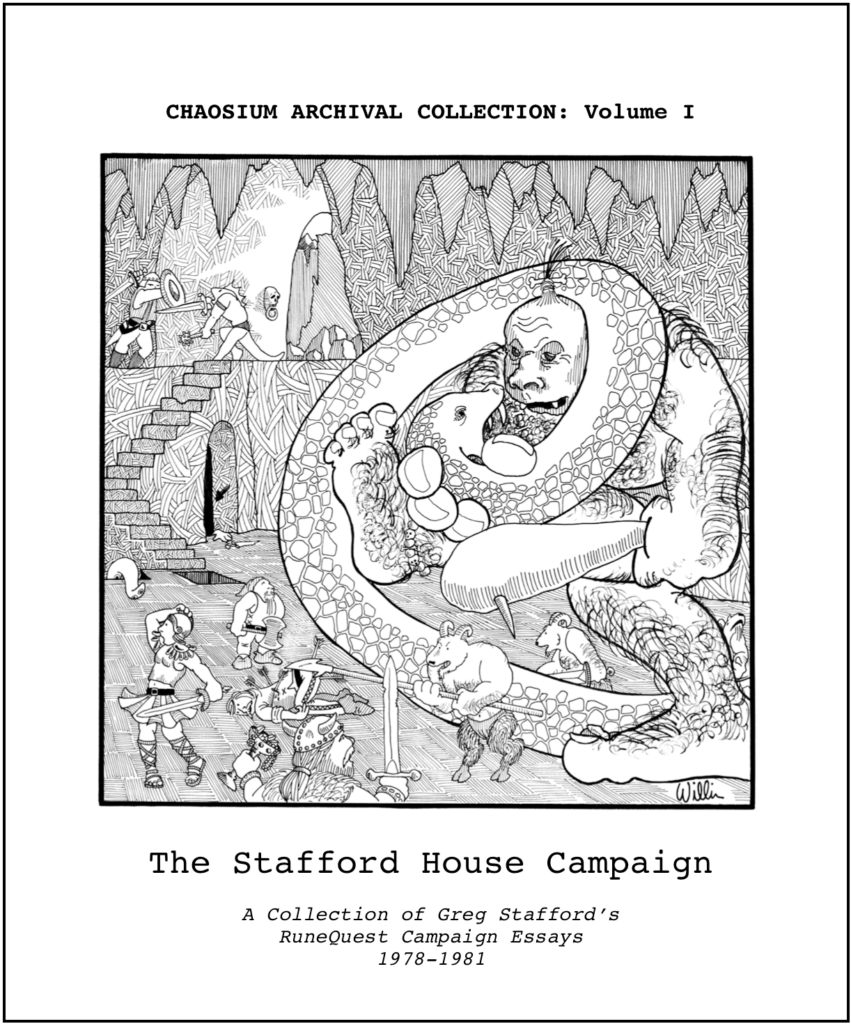
The book that some of us at ChaosiumCon were lucky enough to get is finally out to the general public! The full title is “Chaosium Archival Collection – Volume 1: The Stafford House Campaign“, but don’t get your hopes up about this ominous “Volume 1” bit… as far as I can tell, this is “just in case” they stumble upon more interesting stuff in their archives. It’s likely that there won’t be a second volume for years, or ever.
Anyway, this 84 pages book contains articles written by Greg Stafford between 1978 and 1981, in the very early days of RuneQuest and Glorantha.
Be transported in time to the earliest days of tabletop roleplaying games with the first volume of Chaosium’s Archival collection: The Stafford House Campaign.
Greg Stafford’s RuneQuest house campaign has a kind of legendary status among fans of the game. Many of the original RuneQuest playtesters took part in it, which was hosted either at the Stafford home on Evelyn Avenue in Berkeley, or the first Chaosium office nearby.
These articles were published in early gamging fanzines (or, technically, APAs… Amateur Press Associations) like The Wild Hunt, but there’s also some exclusive material in the book, such as three articles named “The Pharaoh’s Gazette”, on Greg’s Holy Country games, and some scans of his player record sheets.
I’ve been slowly reading through the book over the summer, as I was waiting for the official release before publishing a review on this website… expect that review later this week or next week! The short version is: it’s obviously a very deep-cut of RPG history and Gloranthan lore, but it’s an absolutely fascinating look into Greg’s games, and the shaping of the Hero Wars meta-plot.
In the meantime, you can get the PDF from DriveThruRPG, or from Chaosium directly. There’s also the softcover print-on-demand version available here.
RuneQuest Homelands
James Coquillat interviews Jeff Richard about RuneQuest’s homelands — those that are presented as character options in the rulebook. This is a good presentation for a new player, as Jeff gives the elevator pitch of each homeland with a little bit of flavour and excitement to make it come alive. There are also some recommendations at the end for picking which homeland is right for you.
Jonstown Compendium

The Jonstown Compendium is Chaosium’s community content program for all Gloranthan games, hosted on DriveThruRPG. Disclaimer: all the relevant links are affiliate links that hopefully will let us cover some of the hosting and maintenance costs for the website and podcast! Thanks for using them!
Eyes’ Rise
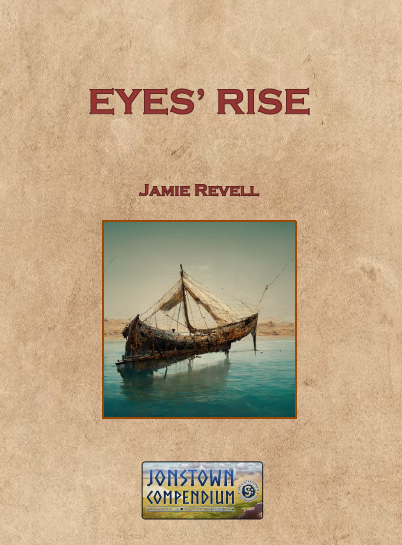
Jamie Revell is taking a break from western Genertela to give us a “small, mostly forgotten village on the River of Cradles“.
It includes nineteen NPCs that can provide interaction or story possibilities for RuneQuest or QuestWorlds games in Glorantha. Much of the material can also be converted to other systems or settings, so long as a half-abandoned frontier settlement might be in need of protection. It also provides a guide to the often-overlooked River Folk of the valley.
Jeff’s Notes

Jeff Richard, the current mastermind on everything Gloranthan at Chaosium, is often posting notes and thoughts on the RuneQuest Facebook group. Here’s our curated list from the past week. A partial archive of these sources is compiled on the Well of Daliath.
Heroquesting
Jeff wrote another semi-cryptic-but-also-semi-useful note about heroquesting:
A heroquest is an exploration of Glorantha’s collective unconsciousness – the realm of mythology. In a heroquest, the questers interact directly with the primal forces and archetypes that make up the world. Their mundane skills and abilities are largely irrelevant here – this the realm of Runes and magic. Material limits do not apply here: things may change shape and size; rivers flow uphill; one can breathe beneath the sea and walk on the Sky; and the very landscape may change without warning.
This isn’t the first time Jeff uses the “collective unconscious” as a reference to heroquesting and the God Time. I guess it’s important. But yeah, we’ve discussed this a bit in the past but I think it is a lot more helpful to newbies to describe heroquesting as “adventuring into the world of myths” rather than all this “re-enactment of myths” business we got from the late 1990s and early 2000s.
Of course, it also opens up a bunch of problems: newbie gamemasters need to have the basic elements of Gloranthan mythology in order to be able to riff on it. Not everybody has read books on Aztec or Mesopotamian history to get the basics of what these “primal forces and archetypes” actually do (but most people might have some general idea of what storm and death and hunting gods do from Norse or Greek mythologies, given their prevalence in pop culture).
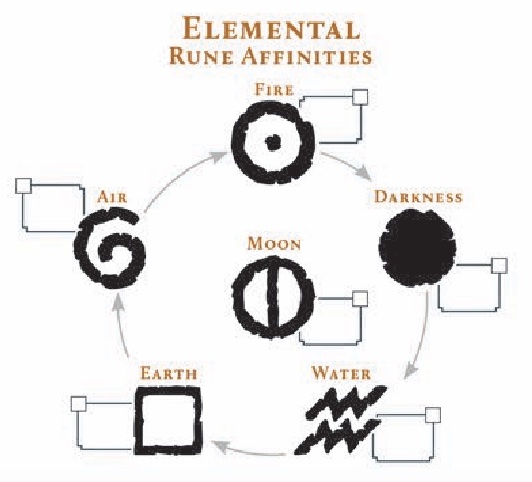
This is where the Runes can be useful: Storm deities get tamed by Earth deities, Light deities crush Darkness deities, and so on. That Runic wheel on the character sheet is useful to get the general idea, although it’s not explained as such — hopefully that explanation will go with the heroquesting rules when they’re published. By the way, if you have the Sourcebook or the Guide, you might be confused about this slightly different version of the wheel:
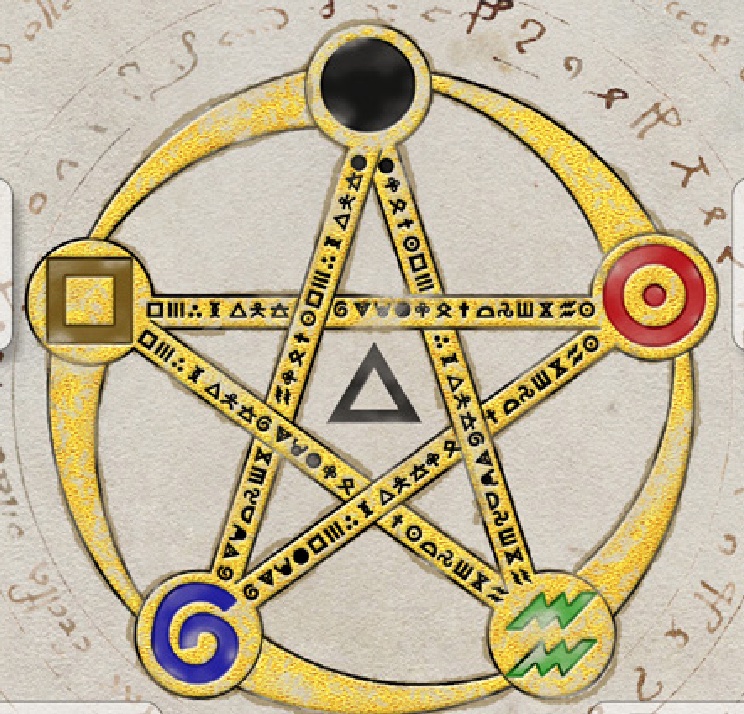
Don’t worry… it’s… complicated. You don’t have to care too much as long as you have some general rule of thumb for how various mythic entities act most of the time (but don’t forget to throw some curve balls every now and then).
The focus on archetypes is significant. When I run a hero quest, the characters encounter the mighty Storm King or Emperor Sun, the Adventurer, the Thunderer, the Sword Man, the Earth Mother, the Wolf, the Bear, the Blue Serpent, the Talking God, the Knowing God, the White Lady, and others. Let the players name them.
This is both good for curve balls (“you thought this Storm God was Orlanth? Nope! You failed your roll so it’s another angry forgotten Storm God from the southern lands of fire!”) and for not having to name-drop many gods from Glorantha lore, which also means not having to know too much in the first place. You just know you need a Water deity over there, you don’t have to care “who” it might be.
Upon their return, the heroquesters bring back both the boons and banes they have gained through their adventure. The banes are many; careless words might bind them as geases, and they might lose parts of their personality or even soul. But the boons are equally mighty – the ability to bring forth some of the magic of the God Time and manifest it in the Now.
I find that figuring out a good power level for boons and banes is tricky — trickier than figuring out the power level of, say, some magical artifact given as a gift by an NPC or found in some loot. I hope there will be some advice on that with either the heroquesting rules or in the general gamemaster guide sections. As for losing “parts of their personality or even soul”, I assume this points at rules in which your character can lose points in Passions or POW or even possibly CHA. Harsh! (but fair)
Heroquesters use myths as guides and navigational beacons, study lore to find paths through the realm of mythology. Yet this can be like trying to find your way through a dream. Only a fool thinks they can effortlessly walk in the paths of the gods. Even the best-known stories can hold surprises, and our every action changes the landscape, like the rotation of a kaleidoscope.
Here we may be back in the land of newbie confusion, I think. Using myths as guides requires knowing those myths upfront (that is: Gloranthan lore) or making them up (which still requires some Glorantha lore, or at least some familiarity with general mythic archetypes, as said previously). It might also require some good way to introduce these “best-known stories” without tedious lore dumps.
Lunar Imperial Finances
Those of you who love spreadsheets might love this: Lunar taxes!
The Red Emperor normally collects [up to 4.5 million Lunars] a year from various sources (rent, harvest taxes, tolls, tribute, etc). That’s roughly comparable to what Antiochus III had access to.
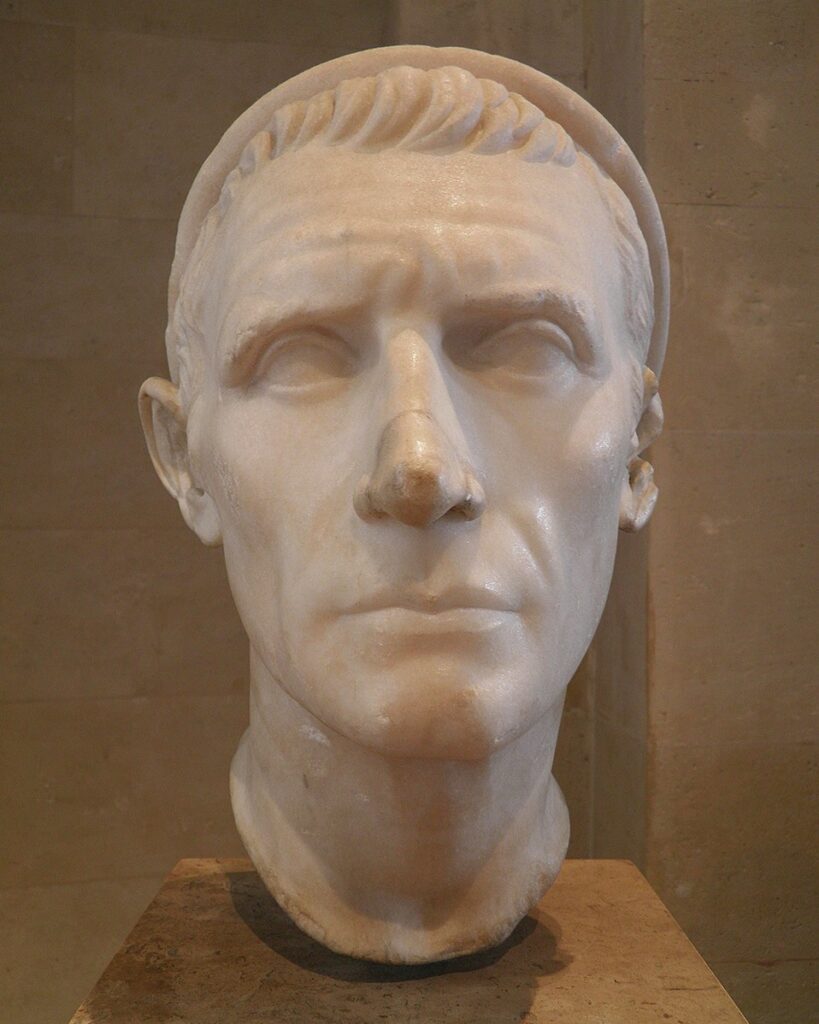
Antiochus III was a Hellenistic king in the 3rd and 2nd centuries BCE. He didn’t rule over ancient Greece proper though: he was in charge of the Seleucid Empire, the largest bit of Alexander’s old Macedonian Empire after it was broken up in pieces following his death. Here’s a map:
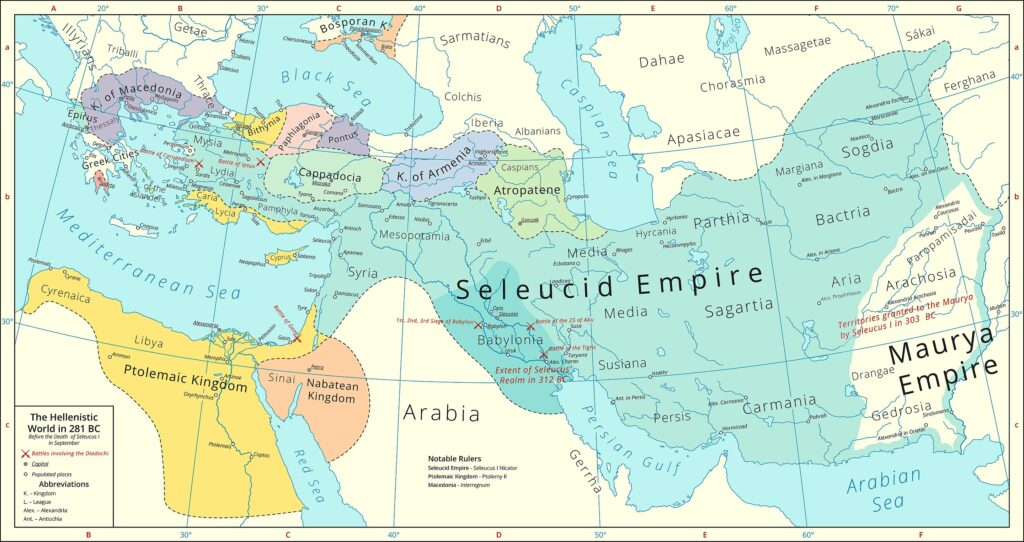
Now Jeff writes:
To maintain the Lunar Army at the wartime 1621 figures costs the Red Emperor [up to 4.2 million Lunars] a year. His cavalry costs about the same as the entire infantry, and the Lunar college of magic costs nearly half as much as the entire Cavalry Corps. Now that’s a wartime army – in peacetime it is probably [up to 3.3 million Lunars].
We had some military numbers from a previous note: 46000 infantry soldiers, about 20000 cavalry soldiers, a bit more than 7000 magicians, and about 4500 support troops. The vast majority of these people would have an average cost of living of 60L as per the RuneQuest rules, with a very small elite around 100 or 200L or more. That does indeed sum up to about 4.2 million Lunars.
There’s not a lot left to run the empire and, more importantly, for the Emperor to finance all his degenerate parties and stuff…
The Lunar Empire has been on a war footing since 1618, so those big rooms filled with gold wheels are now mostly empty, and the Red Emperor has been forced to do things like raise rents, create new taxes, loot temple treasuries, and all sorts of other measures – I mean nobody is going to expect Argenteus to cut down on the public largesse! The sieges of Whitewall and Nochet were absurdly expensive, and neither resulted in much plunder. Worse yet, the Pentans have disrupted the taxes in Oraya and First Blessed, and peasant rebellions (and the White Moon Movement) have troubled Karasal, Oronin, and even the Silver Satrapy! So revenues are way down, expenditures are up.
And then we get the Dragonrise and the defeat of the Lunar Army in the Redlands.
Jeff figures that the empire has been desperate to squeeze more taxes out of its Dragon Pass territories for however long they held them, and than these days maybe a bunch of Etyries (and possibly a few Issaries) merchants might start issuing IOUs to the government… more here.
Elsewhere on Arachne Solara’s Web
Not everything is about Glorantha, although most things are! Here are loosely relevant things that we found on the interwebs.
The Fortress of Azuer
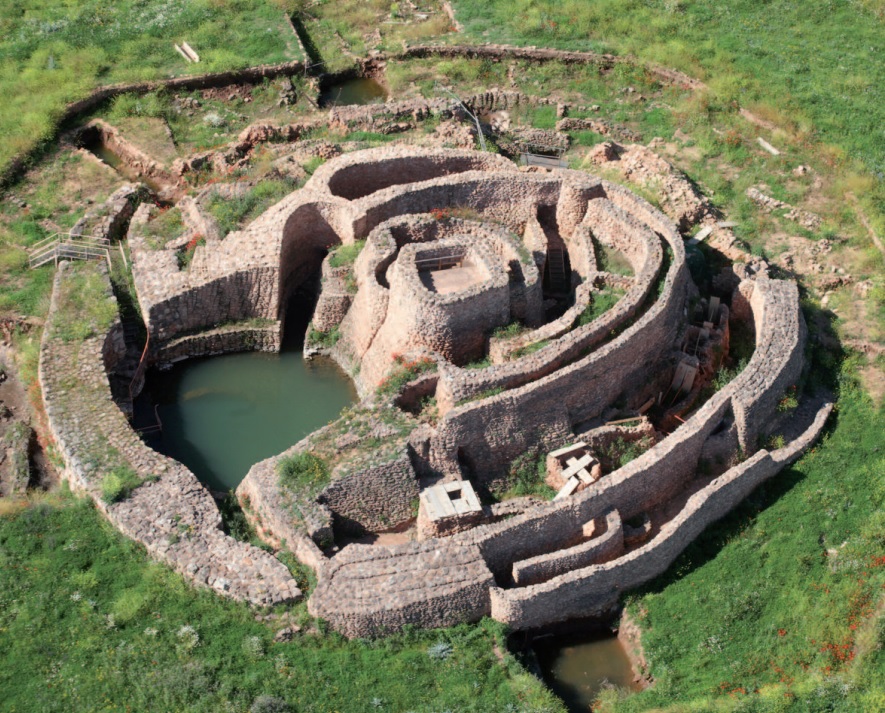
The “Motilla de Azuer” is one of the several fortresses of middle Bronze Age Spain. It contains one of the oldest known wells in the Iberian Peninsula. It’s very likely that the people living there included farmers working the surrounding lands.
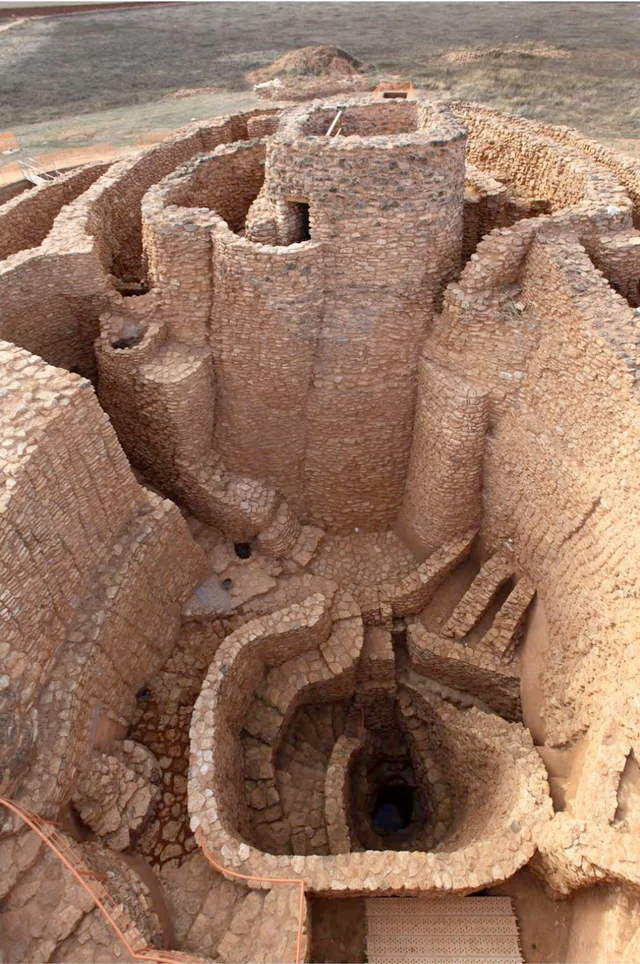
This might be a good reference for a small hill fort. And with its structure that scales up as you get to the centre, it’s begging for the player characters to try and take it!
You can do a virtual visit of the site here, follow someone else here, or visit for real here.
Tablet V of the Epic of Gilgamesh
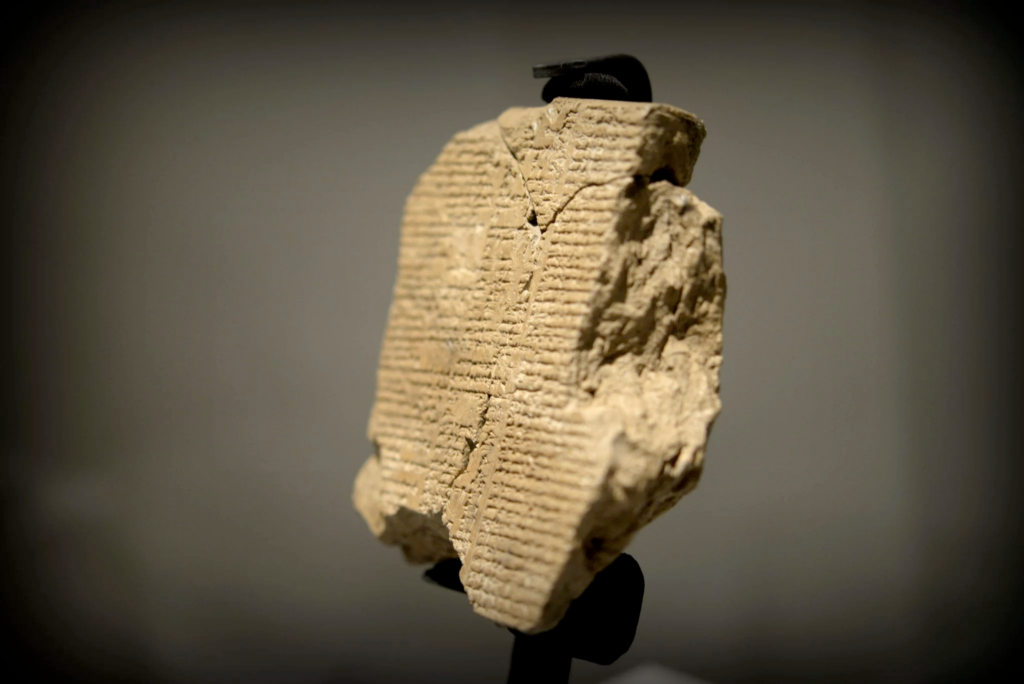
For a 4000 year old text, the Epic of Gilgamesh is apparently surprisingly alive, at least in terms of finding new portions of it. World History has a few articles about how newly discovered tablets in varying preservation states can still bring new fragments of the story to light. This one on Tablet V is pretty interesting, as it mixes wartime looting, clandestine price negotiations, and mythical monkeys. The item (pictured above) was acquired in three broken pieces from smugglers by the Sulaymaniayh Museum in 2011, and it features about twenty extra verses about Gilgamesh and Enkidu’s adventures.
A Frog-Woman Ritual Gone Wrong

So there’s this recent discovery of a large frog graveyard in a mid-iron age archaeological site. The scientists have some super non-fun theories about the presence of 8000 frog bones there, but we all know that it’s probably some Frog-Woman fertility ritual gone wrong, right?
Thank you for reading
That’s it for this week! Please contact us with any feedback, question, or news item we’ve missed!


